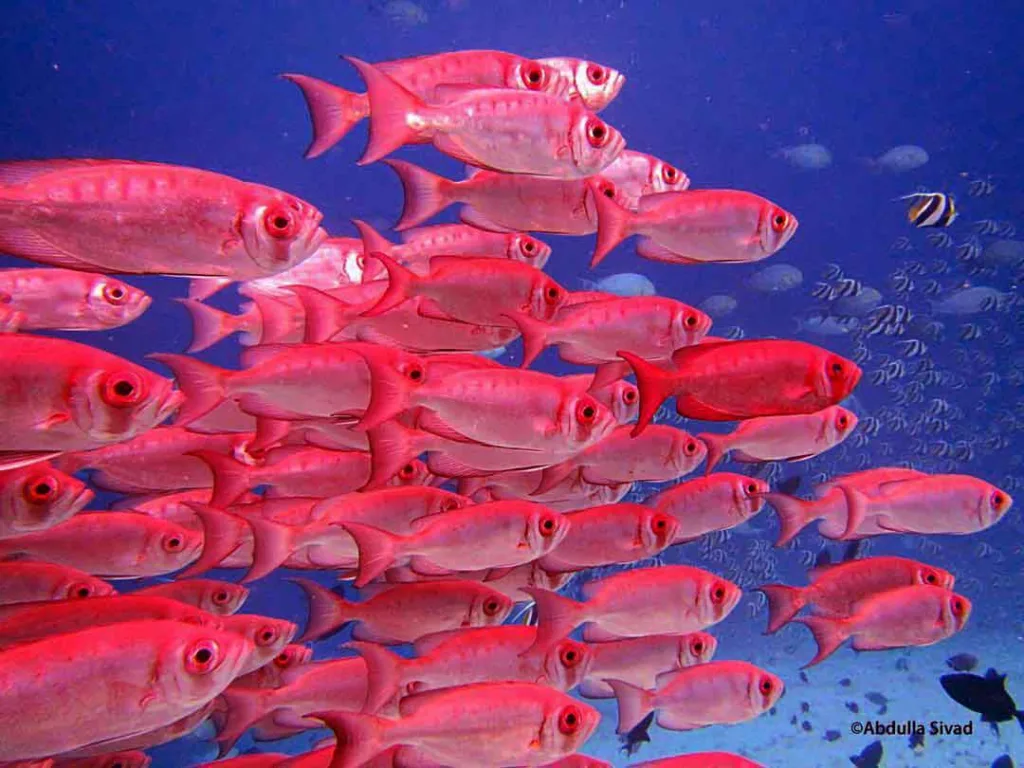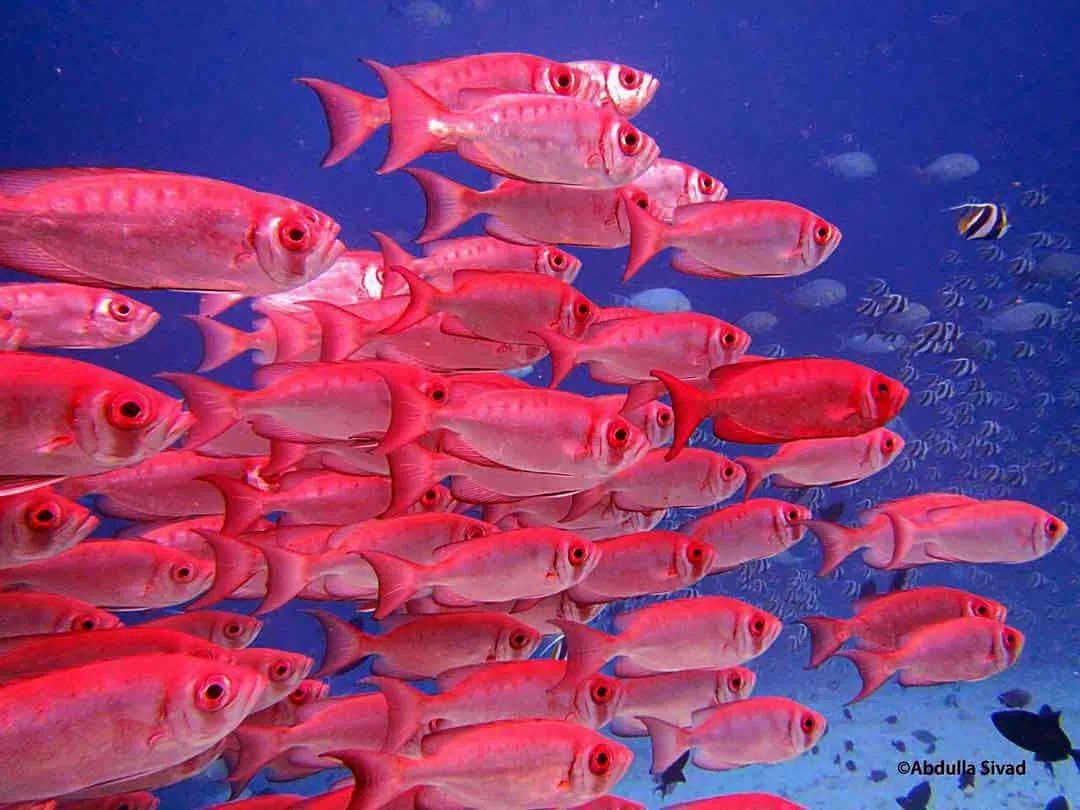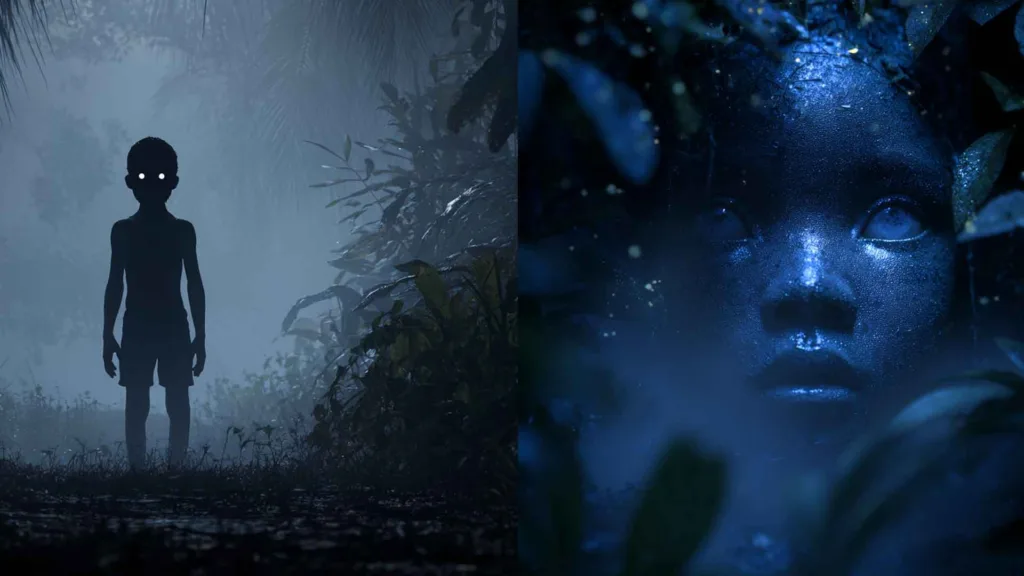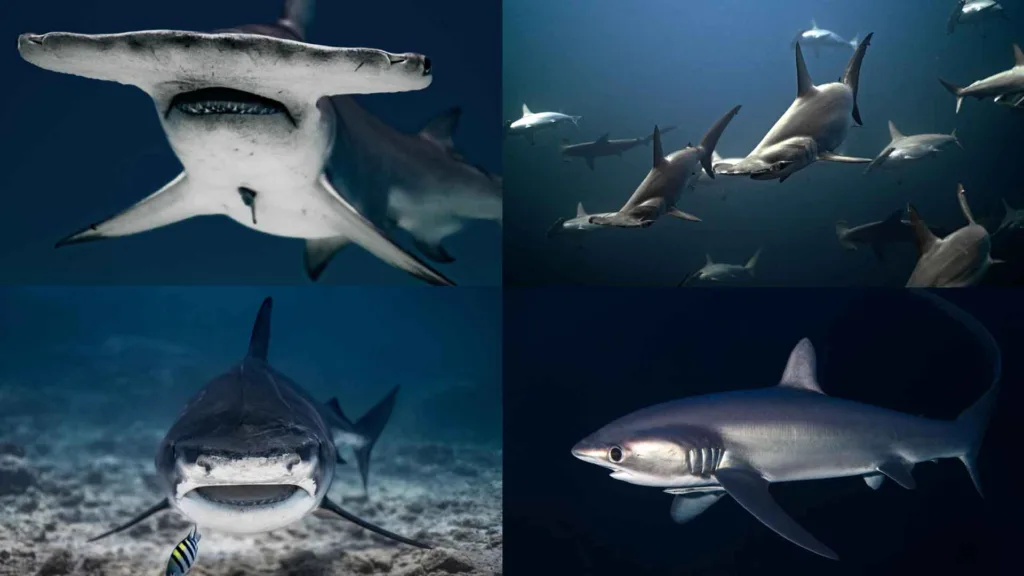
Bigeye (Piracanthus hamrur) is a small family with four genera and about 17 species globally in tropical and subtropical waters, two of which are known from the Maldives. Easily recognised by their large eyes, shape and colour. They are nocturnal fishes that feed in open water at night, capturing relatively small creatures in the zooplankton with their large mouths.
Some of the distinctive characteristics of this fish are that it has a dorsal fin with 10 spines and 13-15 rays. The fish also possesses an anal fin, which is adorned with 3 spines and 13-16 rays. The body depth is about 2.5 to 2.9 in length. The fish body is compressed, and the mouth is vertical.
Usually, the colour of the fish is red to deep red with a series of about 15 dark spots along the lateral It is able to quickly alter to pinkish silver with six red bars on the body and one extending ventrally from the eyes. This fish normally lives at a depth range of about 15 to at least 250 m. It is a nocturnal fish. The fish primarily feed on the larger zooplankton.
Crescent-tail Bigeye (Priacanthus hamrur)
This is found during the day in sheltered parts of reefs or in deep lagoons, sometimes swimming more openly about when forming schools. The crescent tail shape serves as the best means of identification. Colour is variable from silvery-pink to red, sometimes with dusky bands that can be turned off at will. Occurs at depths between 10 and 100 m. Widespread and usually common in the Indo-Pacific. The species has a length of up to 45 cm.
Glass-eye (Priacanthus blochii)
Occurs on protected reefs and in lagoons. The known depth range is 3 to 30 m, but in the Maldives probably extends much deeper. Very similar to P. hamrur but readily identified by its rounded caudal fin. Widespread Indo-Pacific. The species can reach a length of up to 30 cm.
Blotched Bigeye (Heteropriacanthus cruentatus)
During the day, it hides in reefs that are usually moderately deep. The tail has rounded corners, and the body has a blotched pattern. It floats above reefs at night to catch zooplankton. Observed from 3 to 30 m depth. Widespread in the Indo-Pacific and also the Atlantic, ranging into subtropical waters. The species ranges in length from 3 to 32 cm.
Bigeye fish use chromatophores, which are special skin cells, to quickly change between silvery, reddish, and darker colours to communicate, hide, and show how they feel. They use this color-changing skill for social reasons, like courtship and aggression, and to stay alive by hiding from predators and their surroundings.
The body of a Crescent Tail Bigeye can change from silver to pink to red in seconds. It can also change from red to silver with bars and spots or without them.
Their eyes are big, and their mouths are pretty big and turned up. They can get as long as 45 centimetres. When they are young, their tails are short, and the crescent-shaped tail doesn’t form until they are fully grown.
They’re usually shy and will run away from a diver if they get too close, but this one isn’t afraid of the diver. You can see how quickly it’s changing his colour.




